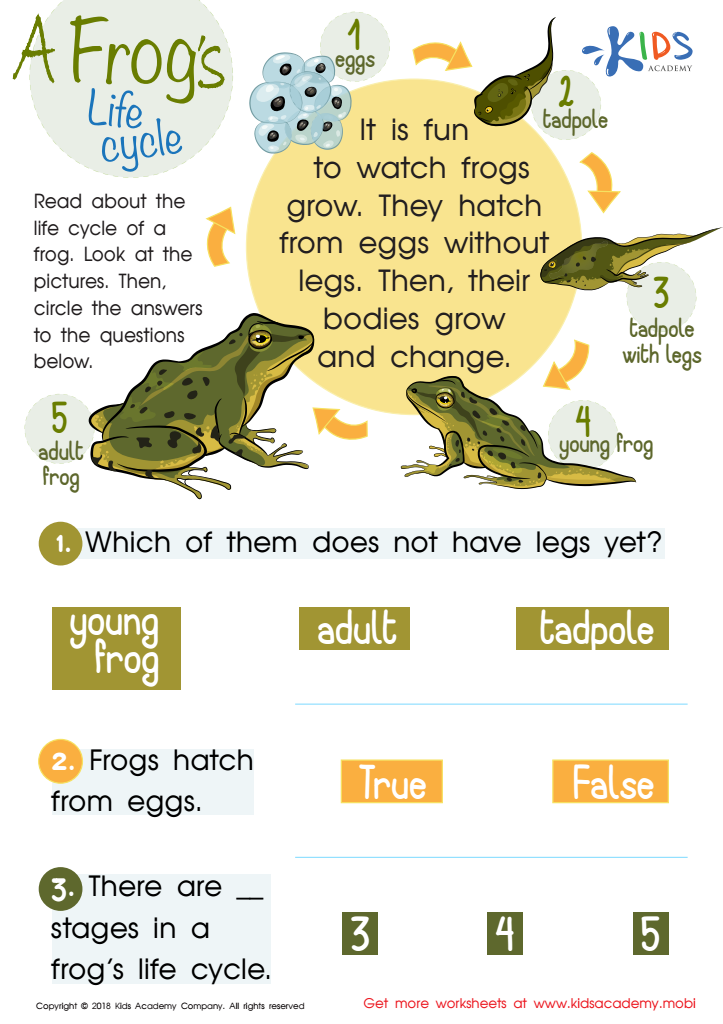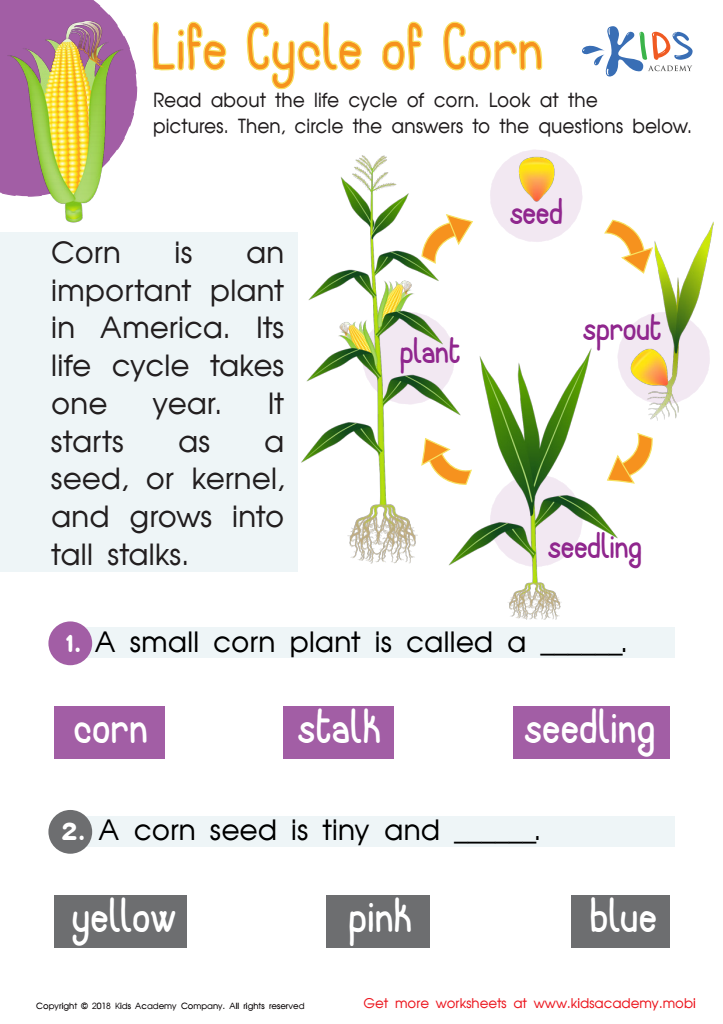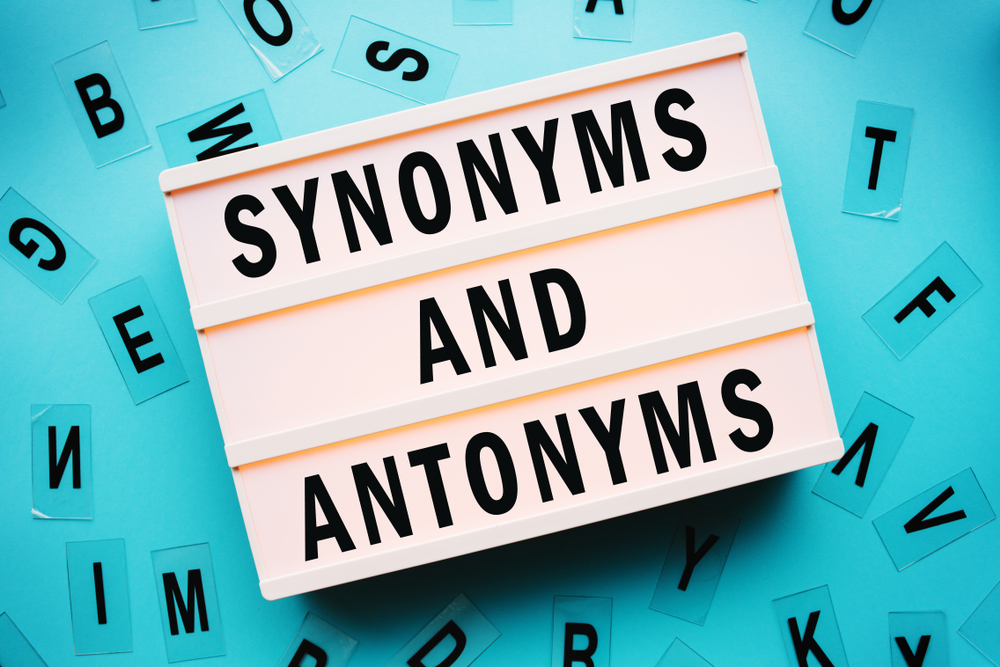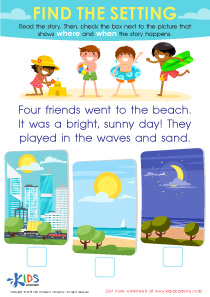Understanding life cycles Easy Reading Non-Fiction Worksheets for Ages 3-8
3 filtered results
-
From - To
Explore the fascinating world of life cycles with our "Understanding Life Cycles Easy Reading Non-Fiction Worksheets" designed for children aged 3-8. These engaging worksheets provide young learners with simple, clear explanations and fun illustrations to help them grasp the concept of life cycles in plants, animals, and insects. Each activity promotes skill development in reading comprehension, critical thinking, and vocabulary. Perfect for classroom use or at-home learning, these resources make understanding complex scientific concepts accessible and enjoyable for young minds. Dive into the wonders of nature and ignite your child's curiosity with our thoughtfully crafted worksheets today!


A Frog’s Life Cycle Worksheet


Life Cycle of a Frog Worksheet


Life Cycle of Corn Worksheet
Understanding life cycles is crucial for young children, as it lays the foundation for their scientific knowledge and curiosity about the world. Books like "Understanding Life Cycles: Easy Reading Non-Fiction for Ages 3-8" provide an engaging way to introduce complex concepts in a simple, relatable format.
Parents and teachers should care about these materials because they play a significant role in the developmental milestones of children. Early exposure to life cycles encourages observational skills, critical thinking, and cognitive development. Kids learn how living things, including plants and animals, grow and change, fostering a sense of wonder about nature.
Additionally, these books often integrate illustrations and interactive elements that keep young readers engaged, making learning enjoyable. Understanding life cycles also connects to larger themes like environmental awareness and responsibility. When children comprehend the importance of each stage in a life cycle, they develop empathy toward all living beings.
Moreover, discussing life cycles in a classroom setting encourages collaboration, communication skills, and discussion among peers. This topic can be the starting point for broader conversations about nature, ecosystems, and the interdependence of life, leading to a well-rounded educational experience. Overall, these resources enrich children’s understanding and appreciation of life.
 Assign to My Students
Assign to My Students














